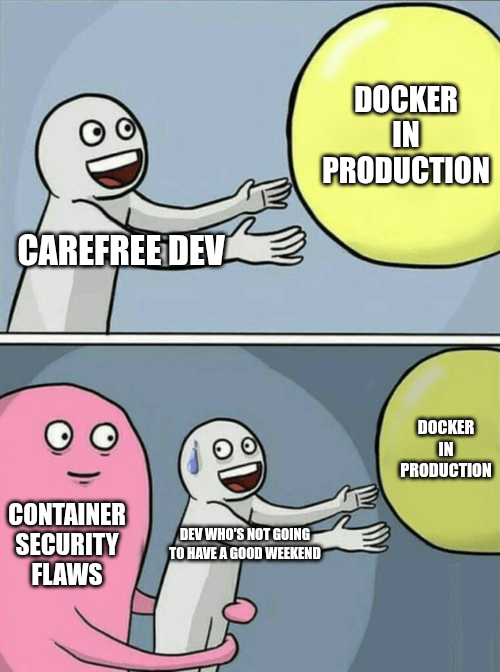Docker is the “pain au chocolat” of the tech world: everyone loves it, everyone talks about it, but the moment you bring up security, suddenly the break room gets suspiciously quiet.
Keep saying “it’s isolated, it’s flexible, it’s portable,” and soon you start believing it’s bulletproof. But one permissive config, one sloppy volume mount, and suddenly it’s open bar in production.
It’s funny—until prod stops laughing.
Because behind the marketing hype, Docker’s “factory settings” security is a lot more fragile than most people want to admit. Here’s a no-BS breakdown for anyone who’d rather prevent trouble than explain at 8AM why everything’s down.
Docker: Handy, but Let’s Not Kid Ourselves About Security
Quick recap for those in the cheap seats: Docker is great for packaging your app, tossing it onto any server/VM/cloud/Raspberry Pi/smart toaster, and watching it Just Work™.
Security, though? Forget the myth of the indestructible container:
- The Docker daemon usually runs as root (yikes).
- Everything depends on the Linux kernel’s security (which is fine… until it isn’t).
- Containers can sometimes gossip with each other more than you’d expect.
In short, this isn’t the safe zone.
Docker’s 7 Commandments
1. Thou Shalt Isolate
No running containers with --privileged. That’s basically handing your house keys to the first stranger you meet.
No wild mounting : Don’t share /, /dev, /proc, or /sys unless you have a very good reason. And if you mount a volume, go read-only. Treat it like your ex treating your Netflix account—access, but no changes.
2. Thou Shalt Not Network Like a Rookie
No more Docker0 bridge for everyone. The default network? Think apartment building lobby—everyone’s eavesdropping.
No --network host ! No, it’s not “easier”—it’s just dangerous.
One dedicated network per sensitive service. Web and database? Keep the traffic separated, like a real chef keeps raw and cooked food apart.
3. Separate Your Namespaces
PID, IPC, UTS: everyone gets their own space, everyone minds their own business.
USERNS: Not perfect, but helpful. Turn on --userns-remap so the container’s root isn’t the host’s root (otherwise, if there’s a hole, it’s an all-access pass).
4. Practice Least Privilege
Drop all capabilities by default (--cap-drop=ALL). Only add back what you truly need (--cap-add), and only if you know exactly why.
Don’t run your apps as root.
Add a dedicated user in your Dockerfile. It’s not hard, and it saves headaches later.
5. Be Stingy With Resources
Limit memory and CPU (--memory, --memory-swap, --cpus, etc.):
If a container goes rogue, it shouldn’t take the whole server with it.
Read-only file system (--read-only) ! Any changes? Stick them in a dedicated volume. That’s it.
6. Be Smart About Storage
Tmpfs for temp files (ramdisk, limited, wiped when the container stops).
Bind-mount or a dedicated volume for persistent data, read-only if possible.
No sharing sensitive files—this isn’t a care bears convention.
7. Log Somewhere Else
Centralize your logs (with --log-driver) to an external server.
If a container crashes and burns, so do your logs—unless you planned ahead.
The Moral of the Story
Anyone selling you Docker as the solution to all isolation problems? Be skeptical.
As always, security isn’t an afterthought—it’s something you bake in from the start.
And if, despite everything, things still go sideways…
At least you’ll know you did your best—and maybe next time, it’ll be someone else’s turn to scramble.
Want to go further? Here’s how to deploy Magento easily with Docker and Warden.

